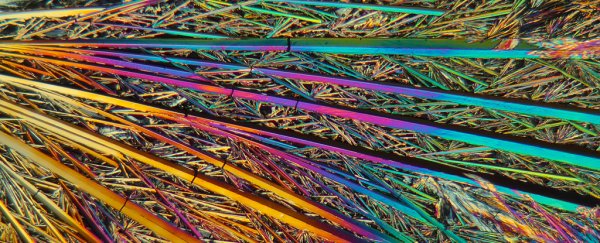Bacteria's troublesome talent for developing resistance against antibiotics is a rapidly growing health threat.
This ability has ancient origins and is allowing diseases like MRSA and gonorrhoea to kill around 700,000 people annually around the world. And these superbugs are now finding their way into other animals, like dolphins, too.
Now, scientists think they may have found an alternative way to treat infectious diseases - rare molecules known as 'antivitamins'.
Traditional antibiotics target bacteria's ability to read its own genetic instructions or construct their protective cell walls, but thanks to the microbes' conniving knack for stealing genes from each other and their environment, we need ever more options to stay ahead of their highly adaptive tactics.
So microbiologist Fabian von Pappenheim and colleagues decided to contribute to the global hunt for antibiotic alternatives by messing with bacteria's need for vitamins, inspired by bacteria's use of this tactic to kill competing bacteria.
Vitamins are vital to all living things for building cellular components, tissue bits and running cell processes.
Antivitamins are similar enough to their vitamin equivalents that they fool biological systems into thinking they're the same molecules, but slightly different in a way that makes them catastrophically faulty substitutes, thereby inhibiting the function of vitamins and becoming toxic to those bacteria that ingested them.
"Just one extra atom in the antivitamin acts like a grain of sand in a complex gear system by blocking its finely tuned mechanics," explained molecular enzymologist Kai Tittmann from the University of Göttingen in Germany.
Only three naturally occurring antivitamins have been described so far. They are roseoflavin (RoF) which works against vitamin B2 (riboflavin), ginkgotoxin (GT) the antivitamin of B6 (pyridoxine) and 2′-methoxy-thiamine (MTh), which can be mistaken for B1 (thiamine).
The researchers used protein crystallography on E. coli and human enzymes to see how the B1 antivitamin MTh works as a toxin.
They found that the methyl part of the molecule (CH3) is replaced by a methoxy group (O-CH3), which is bigger and disrupts the metabolic reactions B1 usually takes part in.
It knocks off the protein glutamate from the rest of its molecule, which leads to glutamates sticking to each other and prevents them from participating in reactions.
Using computer simulations the team also discovered equivalent human proteins do not seem to be affected by the impostor vitamin.
"The human proteins either do not bind to the antivitamin at all or in such a way that they are not 'poisoned'," said chemist Bert de Groot from the Max Planck Institute.
This means the antivitamin MTh, at least, could possibly be used to mess up the critical functions of their corresponding vitamins in bacteria while leaving human systems intact.
"Nature has evolved enzyme systems that can effectively discriminate between structurally similar compounds that differ in only one additional atom," the team wrote in their paper.
"It is difficult to predict at this point if and by which mechanisms bacteria might develop resistance against MTh," they said.
While this is only one of many aspects that still need to be worked out before we come anywhere close to replacing antibiotics, this study gives us another option to look into in our ever changing battle against pathogenic bacteria.
This research was published in Nature Chemical Biology.
